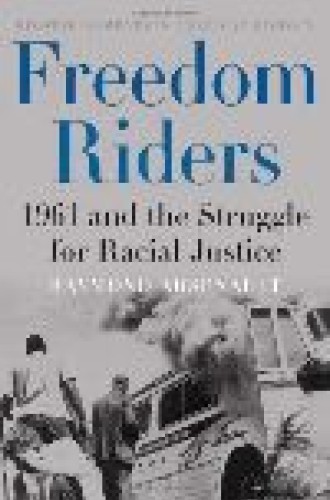Freedom Riders
The freedom riders have suffered from many misconceptions and distortions about their role in the civil rights struggle. In the movie The Ladykillers, Tom Hanks describes the Freedom Riders to a young black man as a group of concerned northern liberals who came to Mississippi in 1964 “so that people like you could have the vote.” He not only got the year wrong, he also missed the fact that very few of the riders were northern liberals—although the northerners were the ones who got the publicity and the plaudits.
In fact, most of the Freedom Riders were black; many of them came out of the Nashville Movement that Jim Lawson, Diane Nash, James Bevel and others had fostered; and none of them were registered voters at the time of the rides. Working in interracial teams, they rode on buses and crossed the color line at the lunch counters and in the restrooms of bus stations. The movement later expanded to include trains and airplanes, and neither the federal government nor the local authorities knew how to deal with the nonviolent provocations.
James Arsenault, who dedicates this well-researched, provocative book to John Hope Franklin, whom he calls the Freedom Writer, delivers an almost day-by-day account of the rides. We meet most of the 436 riders in his narrative, and all of them are included in a fascinating appendix that is itself a major contribution to the history of the civil rights struggle.
The rides began on May 4, 1961, when 13 activists climbed aboard buses in Washington with tickets for New Orleans. Their purpose was to challenge racial segregation in interstate travel, which the Supreme Court had declared an unconstitutional violation of human rights.
They had little trouble in Virginia, Maryland and North Carolina. But as the buses rolled deeper into the South, hostility increased and the beatings began. Martin Luther King met them in Georgia and warned, “You will never make it through Alabama.” The Ku Klux Klan, the police and local officials conspired to stop them by brute force. The Freedom Riders pressed on with great courage, and in Birmingham some were beaten severely and arrested.
Arsenault traces the precursors of the Freedom Rides. On July 16, 1944, Irene Morgan, a black defense worker, boarded a crowded Greyhound bus in Virginia, and when she refused to give up her seat to a white passenger, she was hauled off to jail. Her case provided the NAACP the opportunity to begin to dismantle the Jim Crow laws that continually humiliated African Americans. When the Supreme Court ruled in 1946 that the segregation of passengers violated the spirit of the Constitution’s interstate commerce clause, a Journey of Reconciliation was organized by Bayard Rustin and George Houser of the Congress of Racial Equality. It became the model for the 1961 rides.
The struggle among the various black organizations is neither hidden nor softened in Arsenault’s narrative. The NAACP, CORE and the Southern Christian Leadership Conference, headed by King, vied with one another not only about tactics and strategy but also about the philosophy of nonviolence and confrontation.
The most disappointing officials in Arsenault’s story are President John F. Kennedy and his brother Attorney General Robert Kennedy. They were not only cautious in their dealings with the rides and the riders but also politically calculating in their continuing efforts to appease southern governors like Ross Barnett and police officials like “Bull” Connor. The Kennedys were more interested in votes than in justice.
Perhaps the most horrifying part of the story is the way the riders were treated in southern jails and prisons. In Mississippi the word Parchman is still used as a synonym for hell. Jailers deliberately placed young African-American riders in solitary confinement in outdoor, metal cells in the hot summer sun, then hosed them down with cold water at night.
The Freedom Riders prevailed against all odds. Their almost unimaginable courage changed the face of the American South. “Within six months of the first Ride,” Arsenault writes, “travelers of all races were sitting side by side on buses and trains all across the nation without fear of arrest, the WHITE and COLORED signs that had blighted the walls of Southern bus and train stations for decades were gone, the nation’s major civil rights organizations had undergone significant transformations, and the Justice Department had been pushed into a deepening engagement in civil rights matters.”
An auction of singer-pianist Bobby Short’s memorabilia was recently held at New York’s Carlyle Hotel. Short, the urbane, sophisticated voice of American jazz who grew up in Decatur, Illinois, collected items that reflected how far African Americans had come. One of the pieces that brought the highest bid was a COLORED ONLY sign that had hung in the entrance to his apartment.





